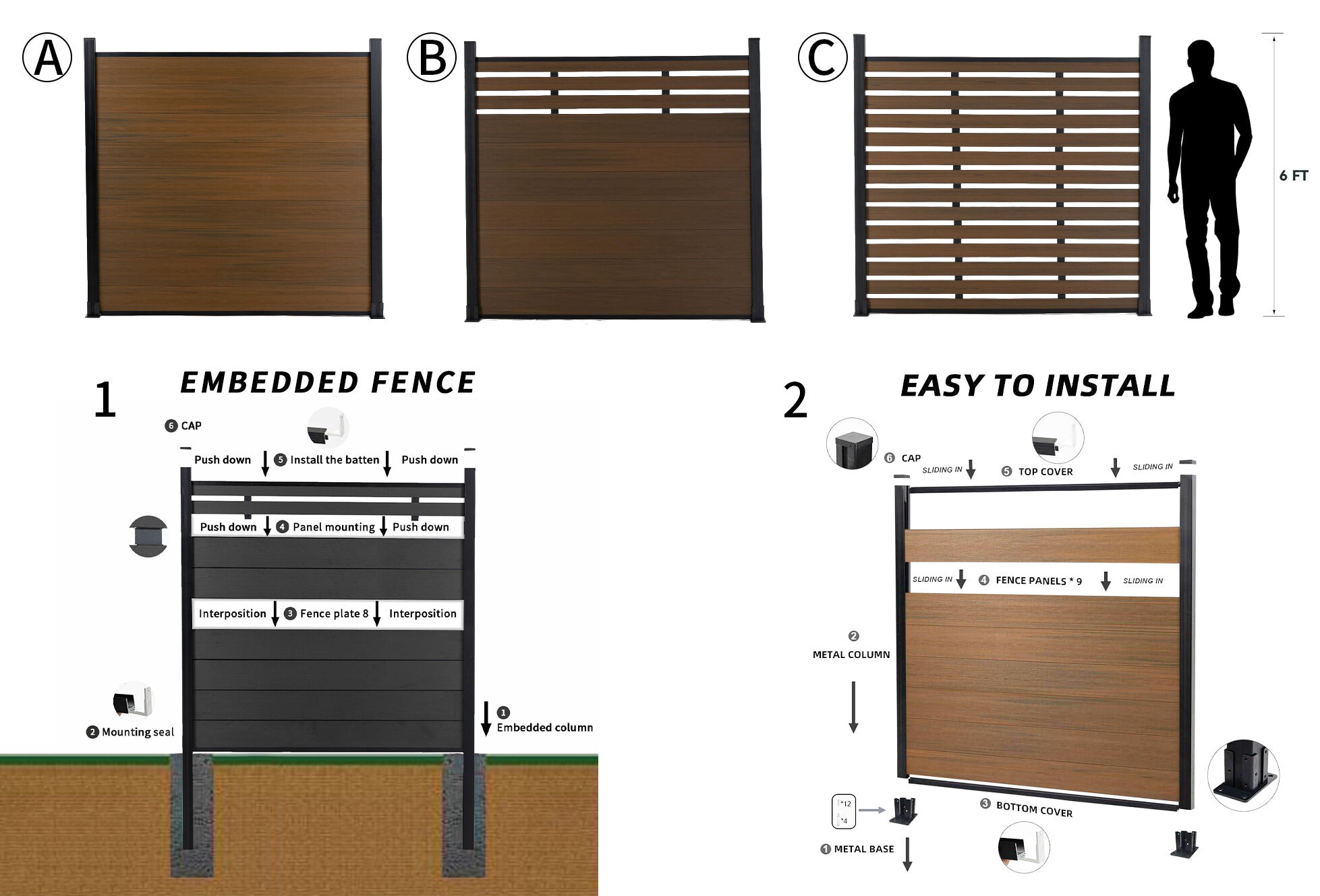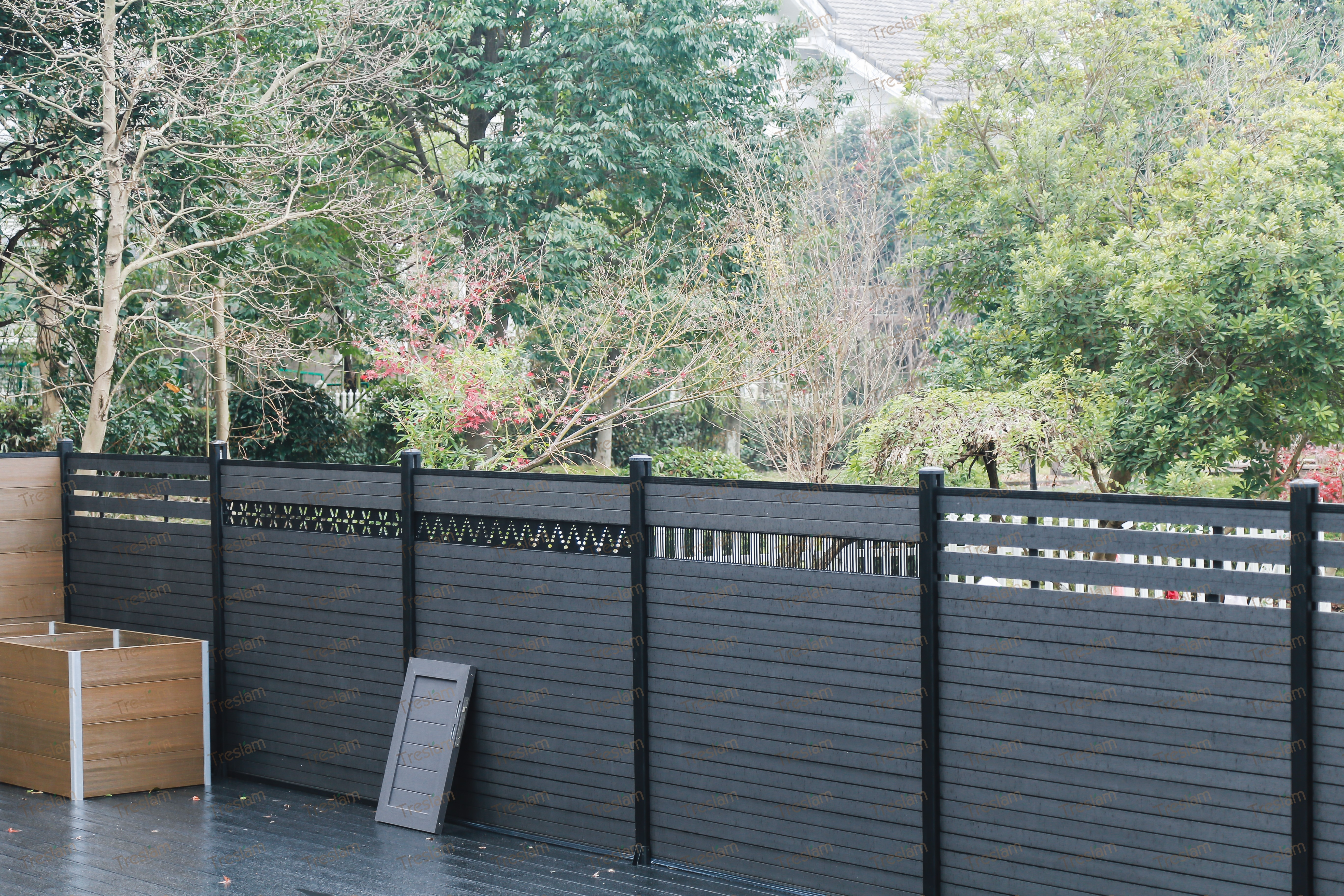When it comes to upgrading your outdoor space, choosing the right fencing material is crucial. WPC fencing—also known as wood-plastic composite fence—has become a top choice for homeowners seeking durability, low maintenance, and aesthetic appeal. In this guide, we’ll cover everything you need to know about WPC fences, including benefits, types, installation tips, and how they compare to traditional wood fencing.
What is WPC Fencing?
WPC (Wood-Plastic Composite) fencing combines natural wood fibers with high-quality plastic to create a fence that offers the best of both worlds. Unlike traditional wood fences, WPC fences resist rotting, warping, and termite damage. This makes them ideal for privacy fences, garden boundaries, and decorative outdoor walls.
Benefits of WPC Fences
Low Maintenance
Unlike wood, WPC fences don’t require regular painting, staining, or sealing. A simple wash with water and mild soap keeps them looking new.Durability
Resistant to moisture, insects, and extreme weather, WPC fences can last over 20 years without losing their structural integrity.Eco-Friendly
Many WPC products use recycled wood and plastic, reducing the demand for virgin materials and lowering environmental impact.Aesthetic Versatility
Available in various colors, textures, and panel styles, WPC fences can complement any outdoor design. You can also choose options like fence posts with integrated lights to enhance your garden ambiance.
Types of WPC Fencing
Composite Privacy Fences
Perfect for keeping your backyard private while maintaining a modern look. Panels often come in 6 ft privacy fence sizes for ultimate coverage.Horizontal Slat Composite Fences
Horizontal designs offer a contemporary feel and are ideal for modern homes. Check out our guide on slat composite fence installation for inspiration.Composite Fence Gates and Kits
Complete your setup with composite gate kits or double gate kits. These solutions make installation easier and ensure a cohesive look.
How to Install a WPC Fence
Installing a WPC fence is straightforward, especially with pre-made panels or kits. Here’s a simple step-by-step guide:
Plan Your Layout – Measure your property and mark fence lines.
Install Posts – Use concrete for maximum stability. Posts should be spaced according to the panel width.
Attach Panels – Fit the WPC panels into posts using the provided brackets or screws.
Add Finishing Touches – Install fence posts with lights or decorative caps for a polished look.
For more detailed instructions, check out our blog on how to install composite fence.
WPC Fencing vs Wood Fencing
Many homeowners wonder if WPC fences are worth the investment compared to traditional wood. Here’s a quick comparison:
| Feature | WPC Fence | Wood Fence |
|---|---|---|
| Maintenance | Low | High |
| Durability | 20+ years | 5–10 years |
| Weather Resistance | Excellent | Moderate |
| Eco-Friendliness | Often recycled | Requires logging |
| Cost | Moderate | Lower upfront, higher long-term |
Overall, WPC fencing is ideal for homeowners looking for long-lasting, low-maintenance fencing solutions.
Choosing the Right WPC Fence for Your Home
When selecting your WPC fence, consider:
Panel Style: Privacy, slat, or decorative panels
Height: Standard 6 ft privacy fences or custom sizes
Accessories: Gates, lighting posts, and finishes
Visit our product page to explore composite fence boards, composite gates, and fence door kits designed to simplify your outdoor renovation.
Conclusion
WPC fencing is a versatile, durable, and stylish solution for modern homeowners. Whether you’re building a privacy fence, installing a slat composite fence, or upgrading with fence posts with lights, WPC offers long-term value with minimal upkeep.

